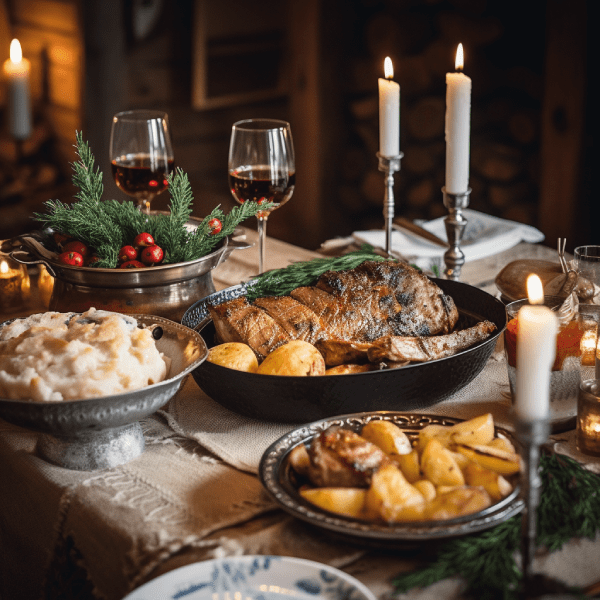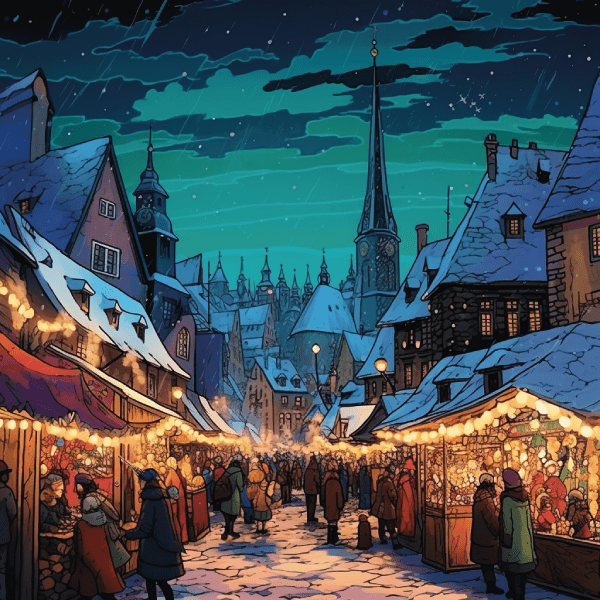Embracing Estonia’s seasonal delights
Winter in Estonia is not just a season; it’s a celebration of life and nature’s bounty. Nestled in the snowy embrace of Northern Europe, Estonia transforms into a picturesque wonderland, offering a unique experience that extends to its culinary traditions. As you stroll through the frost-kissed streets, you’ll notice the vibrant connection between the Estonian way of life and the rhythm of the seasons.
During the summer, Estonians engage in the joyful task of berry picking, while autumn is marked by the harvest of fruits, vegetables, grains, and a myriad of mushrooms. These treasures of nature are skillfully preserved – pickled, salted, smoked – ensuring that the pantry remains a trove of flavors throughout the harsh winter months.
In today’s Estonia, the necessity of preservation has given way to a delightful tradition, celebrated by both home cooks and avant-garde chefs alike. This blend of old and new is particularly evident in the preparation of the talveõun, or winter apple. These late-harvested apples, which maintain their crispness through the cold months, are a testament to the Estonian respect for nature’s gifts.
A feast of heart and hearth
The heart of Estonian winter cuisine lies in its Christmas dinner, a meal that epitomizes warmth and sustenance. Let’s delve into the staples of this feast:
- Verivorst (blood sausage): a rich, savory delight that encapsulates the essence of traditional Estonian cuisine.
- Sült (jellied head cheese): A unique dish that showcases the resourcefulness and creativity of Estonian cooking.
- Hapukapsas (sauerkraut): Fermented to perfection, adding a tangy contrast to the hearty meal.
- Roasted potatoes and pork: Simple yet satisfying, these staples are the backbone of the Christmas dinner.
- On the side, lingonberry sauce and pickled pumpkin cut through the richness of the meats, creating a harmonious balance on the palate.
While these dishes have their roots in Estonia’s culinary past, modern tables often include vegetarian and vegan options, reflecting the country’s evolving tastes and commitment to inclusivity.
Estonian desserts
No Estonian Christmas is complete without the sweet aromas of piparkook (gingerbread) and the zest of mandarin oranges. In every corner of Estonia, from bustling markets to cozy cafes, you’ll find intricately decorated gingerbread cookies. Accompanied by a mug of mulled wine, spiced with or without a dash of Vana Tallinn, these treats are not just food; they’re a warm embrace on a cold winter’s night.
Ancient rituals and modern celebrations
The Estonian Christmas dinner, a blend of ancient customs and contemporary practices, is steeped in symbolism and family values. In pagan times, the table would be laden with seven, nine, or twelve dishes – numbers that were believed to bring good fortune. The dinner, traditionally enjoyed on Christmas Eve, was more than a meal; it was a sacred event, respecting the spirits believed to dwell under the table.
Where to experience the magic
For those visiting Estonia during the holidays, the quest for a traditional Christmas dinner is an adventure in itself. Various hotels and restaurants offer special menus for December 24th and 25th, featuring festive dishes that embody the spirit of the season.
From luxurious manor homes to cozy inns, these establishments often include holiday packages, ensuring that your Christmas in Estonia is as enchanting as it is delicious.
Häid jõule ja head isu! Merry Christmas and bon appetit!
FAQ
What are some must-try traditional Estonian Christmas dishes?
Traditional dishes like verivorst, sült, hapukapsas, and oven-roasted pork are quintessential. For a sweet treat, don’t miss the piparkook (gingerbread).
How do modern Estonian Christmas meals differ from traditional ones?
Modern meals often include lighter, vegetarian, or vegan options, reflecting contemporary dietary preferences and a broader palette.
Are there any unique Christmas traditions in Estonia?
Yes, the ancient tradition of serving a specific number of dishes for good luck and the belief in spirits residing under the Christmas dinner table are unique to Estonian folklore.

